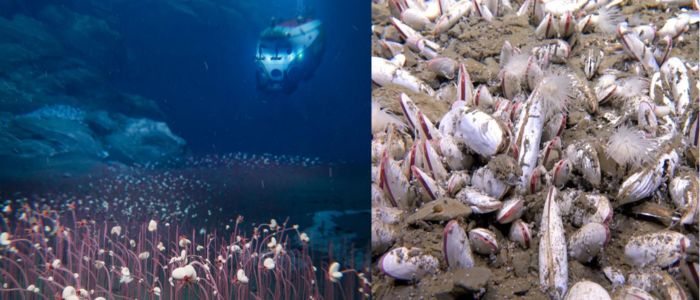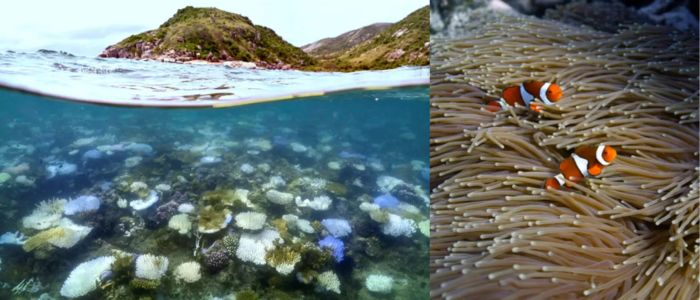In the process, they have captured dramatic images and footage of beds of clams, fields of tube worms, and pools of bacteria living more than 9km (5.6 miles) in the depths of the northwest Pacific Ocean.
Using Fendouzhe, a submersible designed to descend beyond 10km under the ocean's surface for extended periods, the team explored over 2,500km of ocean floor, achieving depths of between 5,800m and 9,533m.
This work has now been published in the journal Nature.
Scientists had long theorized that life could exist at such extreme depths, but the abundance and variety discovered in this expedition surprised even veteran researchers.
One of the lead scientists on the cruise, Dr Xiaotong Peng from the Chinese Academy of Sciences' Institute of Deep Sea Science and Engineering, said the sight had been "amazing" and the discovery "a great opportunity to discover new things".
Life in the Dark: Chemically powered ecosystems
The depths of the ocean are a dark, pressurized world to which the sun never comes. These are deep-sea organisms that do not depend on photosynthesis; they sustain themselves through a process known as chemosynthesis.
Here, life is nourished by chemicals such as hydrogen sulfide and methane that pour out of cracks in the Earth's crust.
And the researchers recorded whole ecosystems that had developed around these chemical seeps. Tube worms and molluscs were some of the most dominant species found.
Some of the creatures might be entirely unknown to science. The team is hopeful that future work will help to reveal how these animals convert chemical energy into life and how they withstand the immense pressure.
"Those creatures must have developed a special way to survive in such a high-pressure environment," Dr Megran Du, another of the institute's lead authors, said. "And that's something that we're going to be looking at further."
The results upend the longstanding belief that life becomes rare or even impossible at such crushing depths. Instead, the team speculates that these ecosystems may be widespread in the deep sea.
Exploring the Unknown: First Ever for Humanity
It's also one of the earliest times that humans have seen such vibrant biodiversity at these depths. The previous record for filming marine vertebrates was 8,336m, where a snailfish was filmed in a trench off the coast of Japan in 2023.
Professor Andrew Sweetman, of the Scottish Association for Marine Science, said: 'We now have a situation where you have connected organisms leading to methane gas that is only about 10,000 years old.
This means that a similar ecosystem could exist in the deepest parts of Earth's oceans that is running on much, much older energy: it takes millions of years for methane to form.'
Those on the submersible felt the experience profoundly. Dr Du provided an overview of the motion of small fish swimming close to the sea floor and offered her interpretation of the scene. "Some people find it spooky, but I always say to my students, look in the window into the bottom of the sea. You will be inspired."
As they continue to explore these uncharted depths, scientists hope to find not just new life forms, but new clues about how life can flourish under the most extreme conditions on Earth.
Environment

New Deep Ocean Life Discovered in Pacific Trenches

A pioneering expedition has discovered huge communities of bizarre and extreme marine life thriving in the dark ocean depths of one of the most isolated parts of the Pacific.















